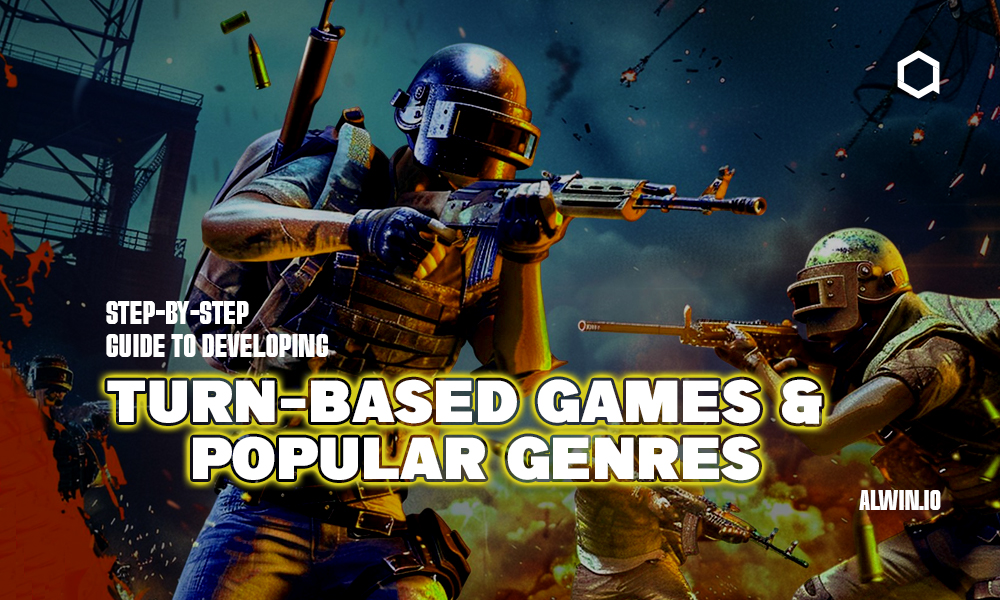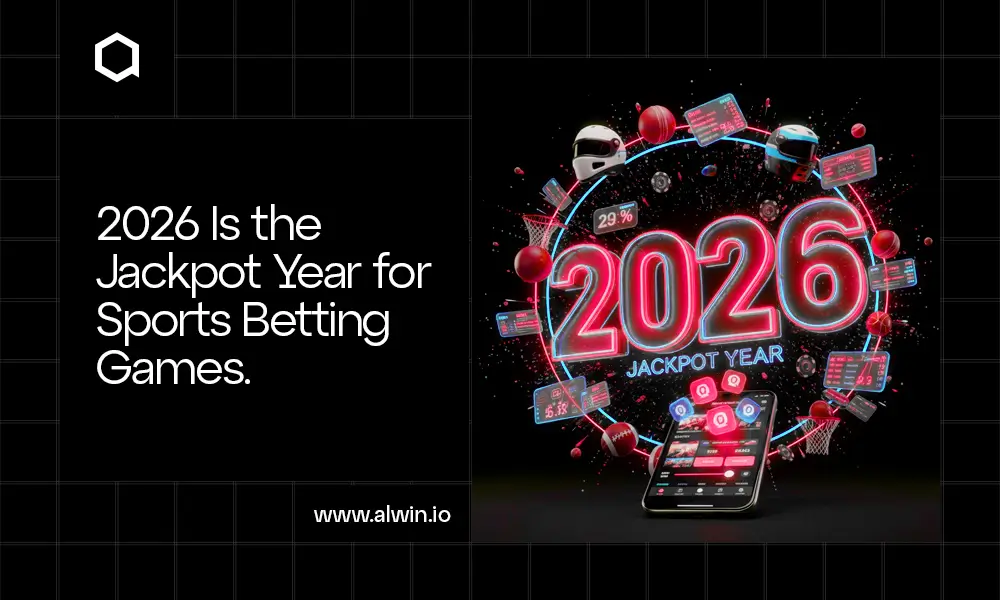Ever played a game where you make a move, then sit back and watch your opponent strategize their next step? That’s the magic of turn-based games, they’re not about speed, they’re about smart work. From classics like chess and card games to modern RPGs and battle simulators, turn-based games give players time to think, plan, and execute with precision.
And guess what? They’re making a huge comeback.
In a world where everything moves fast, turn-based games offer a refreshing change of pace, deep gameplay, strategic decision-making, and highly engaging multiplayer experiences. For developers, they open up a whole world of creativity and monetization opportunities.
In this blog, we’ll explore how turn-based game development works, why this genre is winning over players all over again, and how you can create your turn-based masterpiece.
The Origin and Evolution of Turn-Based Games
Ancient Beginnings
Turn-based gameplay traces its roots back to ancient board games. One of the earliest known is Chaturanga, originating in India around the 7th century AD. This strategic game is widely regarded as the precursor to modern chess, as well as other regional variants like xiangqi (Chinese chess) and shogi (Japanese chess).
The Digital Dawn: 1970s–1980s
With the advent of computers, turn-based mechanics transitioned into the digital realm:
1975: Dungeon, a text-based RPG, introduced turn-based combat to early computer users.
1978: Akalabeth: World of Doom brought first-person dungeon crawling to the Apple II, laying the groundwork for future RPGs.
1980s: Titles like Ultima I and Wizardry popularized turn-based RPGs, establishing mechanics that would become genre staples.
The Golden Era: 1990s
The 1990s marked a boom in turn-based gaming:
1991: Civilization allowed players to guide a civilization through the ages, setting a benchmark for strategy games.
1994: X-COM: UFO Defense blended tactical combat with strategic management, captivating a global audience.
1997: Final Fantasy Tactics introduced deep storytelling and complex job systems to the tactical RPG genre.
The Mobile and Indie Surge: 2000s–2010s
Advancements in technology and the rise of indie developers brought renewed interest:
2001: Advance Wars made turn-based strategy accessible on handheld consoles.
2010s: Indie titles like The Battle for Wesnoth and Disgaea offered innovative mechanics and storytelling, attracting dedicated fan bases.
Modern Innovations: 2020s and Beyond
Today, turn-based games continue to evolve:
AI Integration: Games like XCOM 2 utilize AI to adapt enemy strategies, enhancing replayability.
Cross-Platform Play: Titles now offer seamless experiences across PC, consoles, and mobile devices.
Social Dynamics: Multiplayer turn-based games, such as Among Us, emphasize social interaction and strategy.
User Statistics and Market Insights of Turn-Based Games
Asia Pacific leads the turn-based online game market, accounting for 40% of global revenue in 2023, followed by North America (25%) and Europe (20%). The turn-based card game market was valued at $281.79 billion in 2023 and is projected to reach $665.79 billion by 2030, growing at a CAGR of 13.2%.
The rise of mobile gaming has significantly contributed to the popularity of turn-based games, offering accessibility and convenience for casual gamers. Adults represent the largest market share at 55%, driven by mobile gaming and casual play. Teenagers follow with 35%, with their segment expected to grow at a CAGR of 14% due to increased interest in eSports and competitive gaming.
What are Turn-Based Games?
Turn-based games are a type of game where players take turns to make their move, one at a time, instead of everyone playing at once. Think of it like playing chess: you make your move, then your opponent makes theirs, and so on. That’s exactly how turn-based games work. You get time to think, plan, and act carefully before the game passes control to the next player or opponent.
These games can be about strategy, adventure, or even battles. You’ll often see them in board games, card games, or role-playing games (RPGs), both in real life and on screens.
Some popular examples include:
Chess (classic board game)
Pokemon (where each character takes turns to attack)
Civilization (you build your empire one turn at a time)
Final Fantasy Tactics (a strategy RPG)
What is Turn-Based Game Development?
Turn-based game development is the process of creating games where players take actions in turns, rather than in real-time. It involves designing a structured system where the game flow pauses after each player's move, giving the next player time to plan and act. This type of development focuses more on strategy, logic, and decision-making, rather than speed or reflexes.
Think of building a digital version of chess or a card game. The goal is to create a gaming experience where:
Players act one at a time
Each action influences the next turn
The outcome depends on thoughtful choices
Genres and Types of Turn-Based Games
Turn-based games aren’t a one-size-fits-all experience—they come in many styles, each offering unique mechanics, themes, and challenges. From thoughtful strategy games to intense tactical battles, the turn-based genre covers a wide range of gaming experiences. Let’s break down the main genres and types of turn-based games you’ll find in today’s gaming world.
Turn-Based Strategy (TBS) Games
These are all about planning and big-picture thinking. In turn-based strategy games, players control armies, civilizations, or resources and take turns to build, attack, or defend.
Examples:
Civilization series
Advance Wars
Heroes of Might and Magic
Key Features:
Long-term planning
Resource and territory control
Tactical positioning
Turn-Based Tactics (TBT) Games
A more focused version of strategy, turn-based tactics games emphasize small-unit combat and precise movement on a battlefield. Every turn counts, and each decision can lead to victory or defeat.
Examples:
XCOM series
Final Fantasy Tactics
Fire Emblem
Key Features:
Grid-based movement
Character classes and abilities
High emphasis on positioning
Turn-Based Role-Playing Games (RPGs)
In these games, players control a character or a party of characters in story-driven adventures, with battles happening turn by turn.
Examples:
Pokemon series
Dragon Quest
Persona series
Key Features:
Character development and leveling
Turn-based combat with magic, skills, and items
Rich storytelling and world-building
Turn-Based Card Games
Card games that rely on players taking turns to draw, play, or activate cards strategically. Often used in digital collectible card games (CCGs) or battle card games.
Examples:
Hearthstone
Slay the Spire
Gwent
Key Features:
Deck building and card strategy
Element of randomness with card draws
Strategic timing and combos
Board Game Adaptations (Digital)
Classic board games brought to life digitally still retain their turn-based essence. Players make their moves one at a time in a virtual format.
Examples:
Chess.com
Monopoly (digital versions)
Catan Universe
Key Features:
Familiar board game rules
Digital enhancements like animations, AI opponents
Often includes multiplayer features
Puzzle-Based Turn Games
These are turn-based games where each move is a part of solving a bigger puzzle. There's no real opponent—just the challenge of figuring out the best sequence of moves.
Examples:
Into the Breach
Lara Croft GO
Key Features:
Single-player focused
Emphasis on logic and foresight
Unique game mechanics each turn
Multiplayer Asynchronous Turn-Based Games
These are games where players can take their turns at different times, hours or even days apart. Great for casual or mobile gaming.
Examples:
Words With Friends
Chess (mobile apps)
Ticket to Ride (digital)
Key Features:
Not bound by real-time play
Accessible and flexible
Perfect for casual gamers
Turn-based games are incredibly versatile and appeal to a wide range of players, from competitive strategists to casual puzzle solvers. Whether you’re into controlling armies, crafting card combos, or exploring fantasy worlds one turn at a time, there’s a turn-based game genre for you.
And for developers? It’s an exciting space filled with possibilities to innovate, engage, and create lasting player experiences.
Step-by-Step Process for Developing a Turn-Based Game
Creating a turn-based game isn’t just about making players take turns—it’s about delivering a smooth, engaging experience where every move matters. Whether you're building a mobile chess app, a strategy-packed RPG, or a multiplayer tactics game, the development journey involves a blend of design, logic, and creativity.
Here’s a step-by-step breakdown of how to develop a turn-based game, from idea to launch:
1. Define Your Game Concept
Every great turn-based game begins with a strong idea. This is where you lay the foundation—what kind of game are you building, and who is it for? Decide if your game is a strategy title, a role-playing adventure, a digital card game, or something entirely unique. Consider whether it's single-player, multiplayer, or asynchronous, and think about the setting, storyline, and mechanics that will make it stand out. A clear concept gives your team direction and ensures consistency throughout development. It also helps you pitch the game to partners or investors if needed.
2. Design the Core Game Mechanics
Once your concept is defined, it’s time to design how the game actually works. In a turn-based game, the player experience revolves around how turns are structured and what actions are available during each turn. You need to decide the rules for taking turns, the types of actions (like attack, move, use item, defend), and how each action affects the game state. Creating flow diagrams or mockups of the gameplay loop helps visualize how players will interact with the game, how the enemy AI or opponent responds, and how the game progresses turn by turn.
3. Develop Game Rules and Balance
With mechanics in place, the next step is defining the rules and ensuring they’re balanced. This involves setting up how damage is calculated, how much a move costs in terms of energy or action points, and what limits or cooldowns are in place. You’ll also design how players win or lose—do they need to defeat all enemies, capture points, or complete objectives? Balancing is crucial; the game must challenge players without overwhelming them. You’ll likely revisit this phase often throughout development and testing to ensure a fair and enjoyable experience.
4. Build Wireframes and UI/UX Design
Turn-based games rely heavily on clean and informative user interfaces since players need to clearly see the current game state, available actions, and opponents’ moves. Wireframing the layout of menus, action buttons, status indicators, and game boards helps you plan the user experience. Good UX design ensures players can make strategic decisions without confusion. Whether your game is 2D or 3D, mobile or desktop, a thoughtful and accessible interface is key to keeping players engaged and informed throughout each turn.
5. Choose the Right Tech Stack
Selecting the right tools is essential for smooth development. Game engines like Unity or Godot are popular choices for turn-based games because they support 2D and 3D environments, animations, and cross-platform deployment. Programming languages such as C#, C++, or JavaScript will be used depending on your chosen engine. If your game includes online multiplayer, you’ll also need a reliable networking solution like Photon, Mirror, or Firebase. Choosing the right tech stack from the start ensures your game runs smoothly and is scalable as features grow.
6. Develop the Game Logic
This is where your game comes to life. Game logic includes building the turn system, defining how players interact with the game world, and ensuring each turn is processed correctly. For example, you’ll program how turns switch between players, what triggers each phase of the turn, and how the game responds to different player choices. If you have enemy AI, you’ll also implement decision-making processes that challenge players and react dynamically. Your game logic must be tight, bug-free, and responsive to ensure a smooth and fun experience every turn.
7. Add Art, Animations & Audio
Visuals and sound are what turn code into a real game. At this stage, you’ll add your character models, backgrounds, game boards, buttons, and other visual elements. Animations for actions like attacks, movements, and special effects make the game more dynamic. Don't forget audio—sound effects, voiceovers, and music dramatically boost immersion. Turn-based games may be slower-paced, but they still benefit from high-quality visuals and audio cues that signal turns, confirm actions, and reflect in-game events.
8. Implement Multiplayer (Optional)
If your game supports online play, multiplayer functionality is a must. This involves creating matchmaking systems, handling real-time or asynchronous turn data, and syncing player states across devices. You’ll also need to consider issues like latency, player disconnection, and fairness. Multiplayer adds complexity but also major replay value. Features like leaderboards, chat, and replay systems can further enhance player engagement. If your focus is on PvP or community-driven gameplay, multiplayer integration is essential for long-term success.
9. Playtest and Iterate
Before launch, your game needs to be thoroughly tested. Invite internal testers or a small group of users to play different builds of the game. This will help you catch bugs, test performance, and most importantly, observe how players interact with your mechanics. Are the turns too long or confusing? Is one character or strategy overpowered? Use this feedback to adjust your rules, fix bugs, improve balance, and fine-tune the flow of the game. Iteration at this stage is what separates good games from great ones.
10. Final Optimization and Launch
With a polished game in hand, it’s time to prepare for release. Optimize performance so it runs smoothly on all target devices. Check compatibility, reduce loading times, and ensure animations and sounds are synced perfectly. Set up your app store presence with screenshots, trailers, and descriptions. Plan your launch campaign—whether it’s a soft launch to test markets or a full public release. After testing, optimizing, and promoting, you’re ready to hit launch and introduce your turn-based game to the world.
Bonus: Post-Launch Support and Updates
Your work isn’t done after launch. Keep your player base engaged with regular updates—new levels, balance patches, seasonal content, or even new game modes. Monitor player feedback and analytics to understand what’s working and where players may be dropping off. Community engagement, bug fixes, and feature updates will help your game grow and thrive long after its initial release.
Ending Point
Turn-based games have stood the test of time for a reason: they challenge the mind, reward strategy, and keep players coming back for just one more move. Whether it's a grid-based battle, a collectible card showdown, or a deep RPG journey, the beauty of turn-based gameplay lies in its thoughtful pacing and satisfying decision-making.
As we’ve seen, game development is more than just coding a turn order; it’s about crafting smart mechanics, designing smooth user flows, balancing every stat, and building an experience where every action counts. From the earliest board games to today’s cross-platform multiplayer hits, turn-based gaming continues to evolve, and your game could be the next big thing in that legacy.
So, if you’re thinking of bringing your turn-based vision to life, now’s the perfect time. The tools are better, the market is growing, and players are hungry for fresh strategic experiences.



